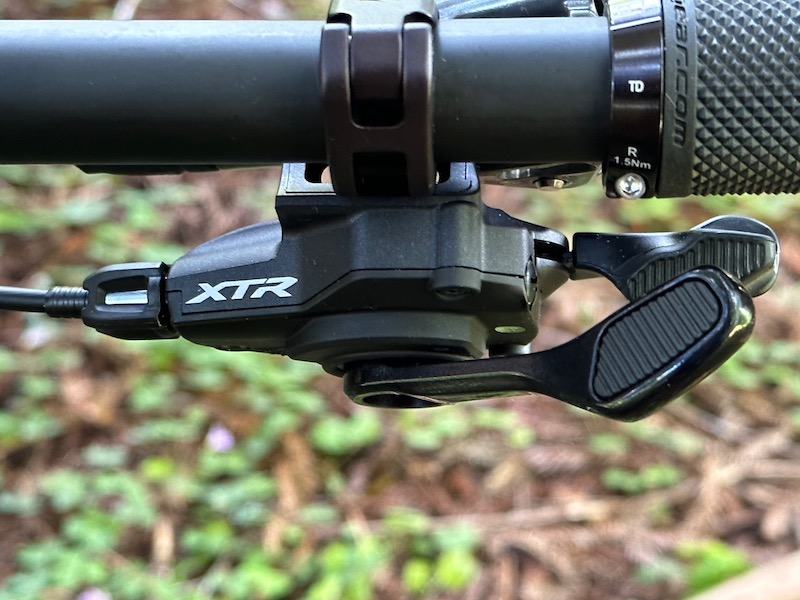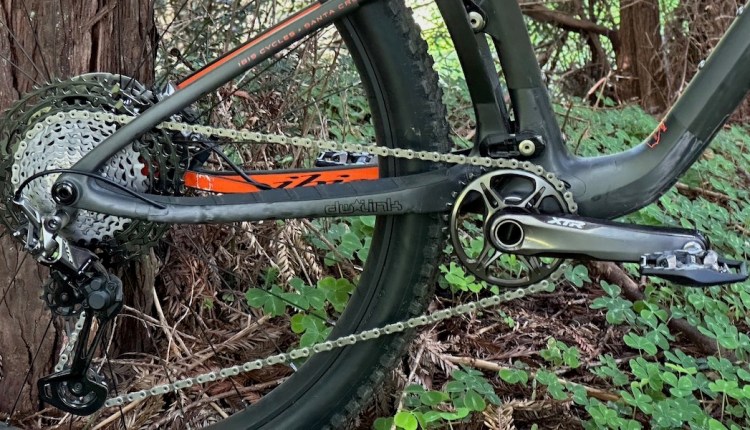I want to get this review off on the right foot, so I’m going to begin with a confession. When Shimano first introduced XTR—back when Nirvana was the hot new band—I salivated, dreaming of replacing the parts on my Merlin MTB at my first permissible grad-student-budget opportunity. But after riding the parts on some bikes I assembled at the shop where I worked, I couldn’t justify the extra money. XTR was clearly better than my Deore XT parts, but not that much better.
I felt the same way when it was revised four years later, to my disappointment. And then in 2002 it became something overthought, too light and finicky. I honestly didn’t like the group. So it went with the successive groups M970, M980 and M9000. The brake levers flexed so much under hard braking I feared I would break them and—worse—they faded under extended braking. While the shifting was always smoother than a politician’s pitch, it could be finicky in mud.
Then, in 2018, I joined some other journalists and Shimano staff for a ride near Lake Tahoe and for the first time I’d ever experienced, Shimano’s M9100 XTR performed so well I could find no faults. No matter how much sandy soil I sailed through, the drivetrain didn’t flinch, and on long, steep descents the brakes didn’t fade, nor did the brake levers flex like they were made of plastic.
Whoa.
To be fair, when I talked with my contacts at Shimano regarding my previous complaints, their response was that they weren’t designing XTR for someone who needed to brake as hard and as frequently I did, that it was designed for pro riders who don’t brake like mortals. I wasn’t the target market.
I’m not sure whether their philosophy changed or I became more their target market, but after my Tahoe experience I became interested in putting some real miles on the group. Then life got in the way.

My own backyard
Reviewing mountain bikes and mountain bike parts isn’t like reviewing road stuff. I can review a road bike anywhere in the world so long as I have a couple of miles of asphalt. It’s helpful to have a fast descent, but I can get the basics of what a road bike is about in a parking lot. But I’ve had enough experiences with riding a mountain bike in some awesome location only to go home and ride the same bike some weeks later and find out that so much of what I though I understood about the bike was me not being familiar with the terrain.
What I’ve learned about mountain bikes is that until I’ve ridden the bike/parts on trails I know well and have expectations for how a bike will react on a given trail, I really don’t know anything about the bike.
Last winter Shimano sent me an M9100 group to review. As you may already know, Shimano produces two different versions of the group, one for XC riders and another for trail/enduro riders. I’ve been riding the trail/enduro group.
The differences between the two groups are mostly minor, with the single greatest differences being the four-piston brake, which increases weight by a scant 73g, and the cage around the pedal, which adds 88g.
The Q-factor for the trail group is 6mm wider than the XC version (168mm vs. 162mm) and the trail crank is a tad heavier.
Beyond choosing which version of the group to go with, there are a few choices. They produce two cassettes, a 10-51t and a 10-45t. I went with the 10-51. The chainring choices run from 30 to 38t in even-numbered-tooth increments.
All the stops
After years of complaints about XTR, maybe because my riding style wasn’t suited to its design features, I have to say I’m crushing on the M9100 trail group. All my old gripes have been put to bed.
The shift action is unquestionably the smoothest mechanical shifting Shimano has ever produced, and that’s saying something. Not only is the shift action light, the way the cassette teeth catch the chain, I’ve yet to have a single missed shift.
Having 12 cogs spread over a 10-51t range gives me range enough for the riding I do. Allow me to elaborate: Most Sundays I ride with friends on trails that our mountain bike club cut. The land sits in Western Sonoma County and is spread over three distinct ridges. It has flat the way an M1 Abrams tank has fuel economy. Most rides see me climb an average of 200 feet per mile. Which is to say, I’m shifting constantly. It’s in this demanding land that I’ve found I’m satisfied with the steps between the cogs, though I must admit I only ever use the two smallest cogs when on pavement.

With the brakes, a small brace was cast into the brake levers to eliminate the flex that I always found so disconcerting. Another objection overcome. The I-SPEC EV mount that allows the shifter to be mounted to the brake lever, rather than have it’s own clamp, shaves weight, but doesn’t result in any unwanted flex.
Let’s talk 1x for a moment. I’d like to observe that in the road world, lubes are discussed in terms of how many watts they will save a rider. Now, a watt is just a watt, but I can attest that the tension placed on the chain with a clutch rear derailleur robs a rider of more power than a great lube can return. Relative to other drivetrains I’ve ridden, XTR gives riders the lowest amount of drivetrain resistance that I’ve experienced; there are objective reasons why, such as their use of 13t jockey wheels in the rear derailleur, which also helps to keep the cage from dragging the ground. I wouldn’t claim the perception while lacking an objective measure were the experience not so readily apparent.
Mo Power
At the end of my Sunday mountain bike rides I usually take the road back into town and the final descent into Occidental is one anyone who has ridden Levi’s GranFondo knows: Coleman Valley Road. Here’s what I mean about not really knowing how good a mountain bike component is until I’ve ridden it on terrain I know.
With Shimano’s M8000 Deore XT, the brakes would groan in the final 100 meters approaching the stop sign. This was a two-piston caliper. With the four-piston caliper of the M8100 Deore XT, I’ve never heard the brakes make a sound as I approach the red octagon. With the M9100 XTR four-piston (trail) brake, they do groan a bit as I approach my stop, but less so than the old Deore XT. The bottom line is that while Shimano does make more powerful brakes, the XTR trail brake does a remarkable job of balancing power against weight.
Pushing these brakes hard enough to find their performance limit isn’t easy to do. I wouldn’t detect the falloff in power were I not riding in a demanding environment. On most terrain, finding the limits of these brakes simply won’t be possible.

The standard
When I go back and forth between SRAM and Shimano road and gravel groups, there’s always something I miss from one or the other. I like hitting a single button to shift chainrings. But I also like hitting the left button to downshit and the right button to upshift. I have no such confusion in preference between Shimano and SRAM MTB groups. The push-pull rear shifter, not to mention the double push are the standards which my riding style has incorporated.
The cost of fun
XTR has always been expensive, but the expense wasn’t the previous groups’ weakness in my view. The weakness was that the performance was compromised to an unacceptable degree. Forgetting the degree to which stuff can be discounted online, I’m going with suggested retails. XTR goes for $1469, though most people will buy this group as part of a complete bike; it’s generally seen on bikes north of $5000, not less than. By comparison, Deore XT goes for less than half that at $611. And while some companies won’t offer XTR on all of their mountain bikes, not offering Deore XT on a high-end mountain bike isn’t a thing.
For the rider who has income enough not to sweat an extra $1000 investment in a bike, XTR will provide a visceral leap in performance over Deore XT in all but one regard: the braking, and depending on where they ride, they may never notice. Those of us who need to plan purchases and weigh the relative merits of premium vs. exceptional products will find it harder to justify doubling our outlay. I ride both Deore XT and XTR every week and with each ride on Deore XT I find myself satisfied with its performance. It has no appreciable faults. I tell myself it’s enough. And then I get on XTR a day or two later and I remember, “Oh yeah, this stuff is sweet.”
I can’t in good conscience advocate such a big spend. But what I can say is that for the person willing to spend for a premium experience, wants the bike that offers a more refined experience and that rewards that extra bit of effort, XTR delivers.
Final thought: You can put a price on fun but no one can tell you what to budget for it.


